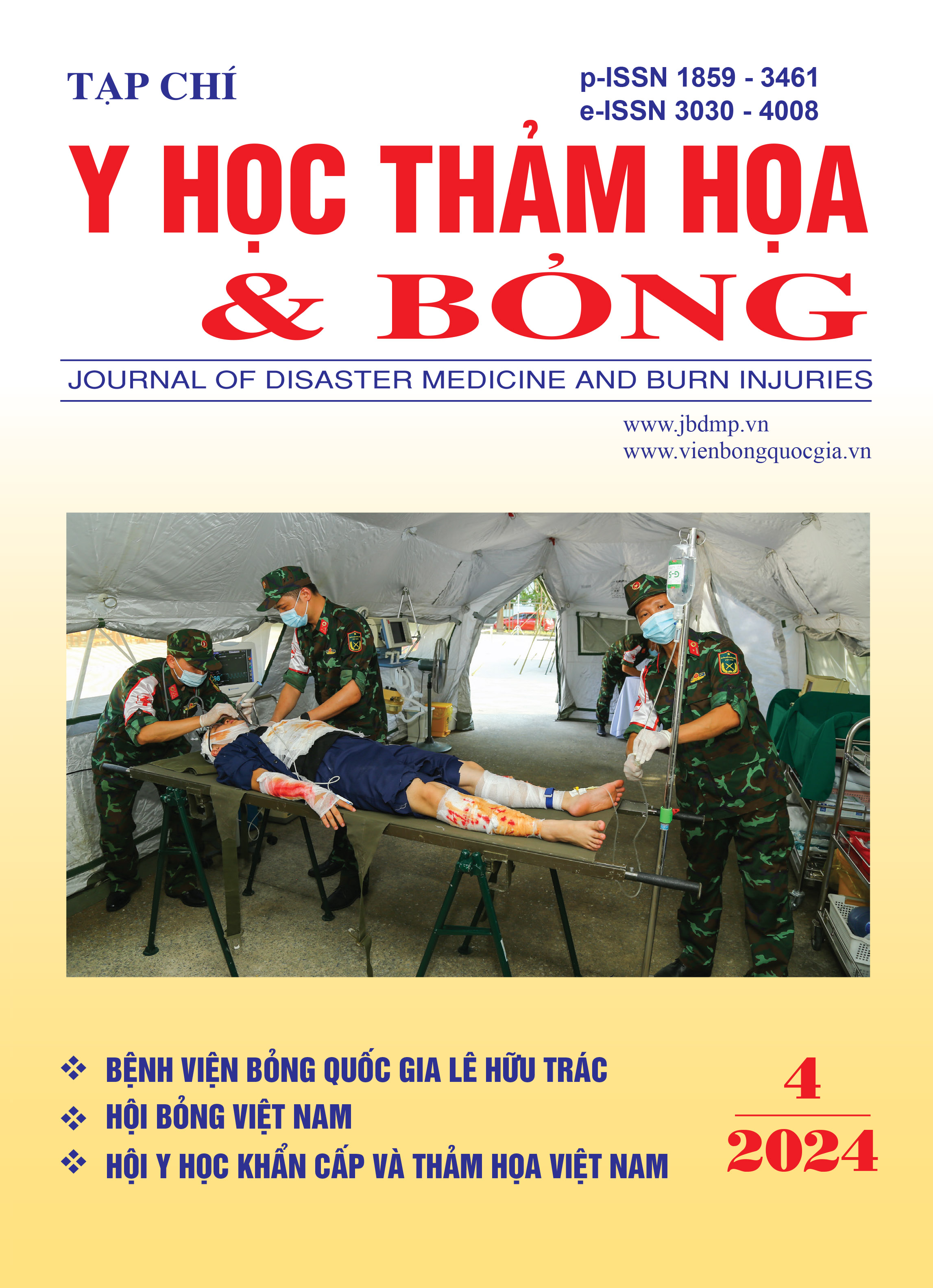Evaluate the chronic skin ulcer on rat model using Doxorubicin
Main Article Content
Abstract
Objectives: Evaluate the characteristics and standards of chronic skin ulcers in rat models by injecting derma with different doses of Doxorubicin to select an appropriate model before evaluating the effectiveness of treatment methods.
Subjects and methods: Wistar rats (170 - 250 grams) were injected intradermally on both sides of the back with Doxorubicin (at a concentration of 2mg/ml) in doses of 0.2mg, 0.5mg, and 1mg at 3 different locations in the lower abdomen: Behind the shoulders and the ears. After the skin ulcer reaches its maximum, create a circular cut wound with a diameter of 10mm.
Results: 100% effective in forming skin ulcers. At injection doses of 0.2mg, 0.5mg and 1mg, the time for lesions to appear is 3.89 ± 0.74 days, 3.44 ± 0.50 days and 3.29 ± 0.70 days, respectively; The time to maximum damage was 7.00 ± 0.82 days, 11.50 ± 1.12 days and 15.50 ± 0.96, respectively. The wound healing time after ulcer creation was 12.5 ± 2.18 days, 23.25 ± 2.33 days and 58.00 ± 7.65 days, respectively. At injection doses of 0.5 mg and 1 mg, the lesions had characteristic chronic inflammation on histopathological testing.
Conclusion: To induce a model of chronic skin ulcers in rats by intradermal injection of Doxorubicin (2mg/ml), the injection dosage should be chosen: 0.5 - 1mg (0.25ml - 0.5ml)/site. Injection, at a location behind the front leg.
Article Details
Keywords
chronic skin wound, rat model, doxorubicin, in vio
References
2. Arifin W.N., Zahiruddin W.M.J.T.M.j.o.m.s.M. (2017). Sample size calculation in animal studies using resource equation approach. 24(5): 101.
3. Rudolph R., Suzuki M. and Luce J. (1979) Experimental skin necrosis produced by adriamycin. Cancer Treatment Reports.63 (4): 529-537.
4. Nunan R., Harding K. G. and Martin P. (2014) Clinical challenges of chronic wounds: searching for an optimal animal model to recapitulate their complexity. Disease models & mechanisms.7 (11): 1205-1213.
5. Lương Thị Kỳ Thủy (2014). Đánh giá tác dụng điều trị loét da mạn tính của cao TG trên mô hình thực nghiệm. Tạp chí Y Dược học cổ truyền Quân sự. 4 (2): 15-22.
6. Nguyễn Thu Trang, Đỗ Thuý Hằng, Lương Thị Kỳ Thuỷ, Phạm Xuân Thắng, Trần Quang Minh (2020). Nghiên cứu hiệu quả điều trị loét da mạn tính về mặt hình thái đại thể của bài thuốc GTK 108 trên động vật thực nghiệm. Tạp chí Y Dược Lâm sàng 108, 15(4): 73-80.
7. Tran Thanh Tung, Pham Thi Van Anh,Vu Quang Huy, Nguyen Thi Thanh Loan, Tran Thuy Trang, Nguyen Kim Giang, Nguyen Thi Quynh Nga (2023). The effects of KEM CON ONG and KEM TRI BONG creams on Doxorubicin-induced skin ulcer in rats. Journal of Medical Research. 166 E12(5): 11-19.
8. Robert T. Dorr, David S. Albert, H.Shiao Sheng, Geogre Chen (1980). Experimental Model of Doxorubicin Extravasation in the Mouse. Journal of Pharmacological Methods 4: 237-250.


